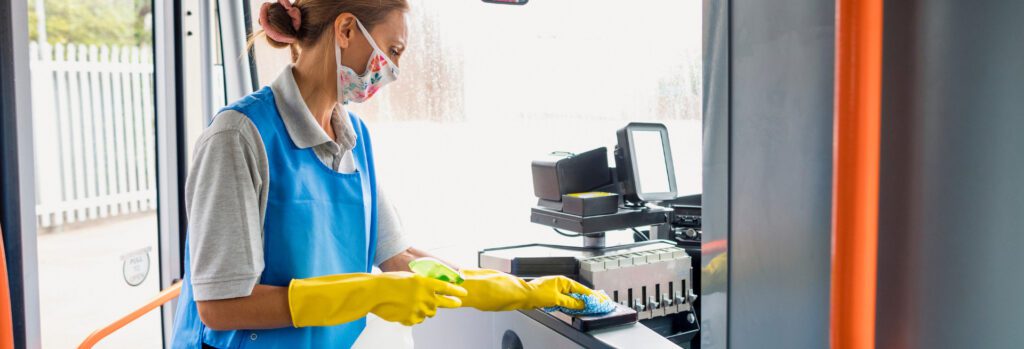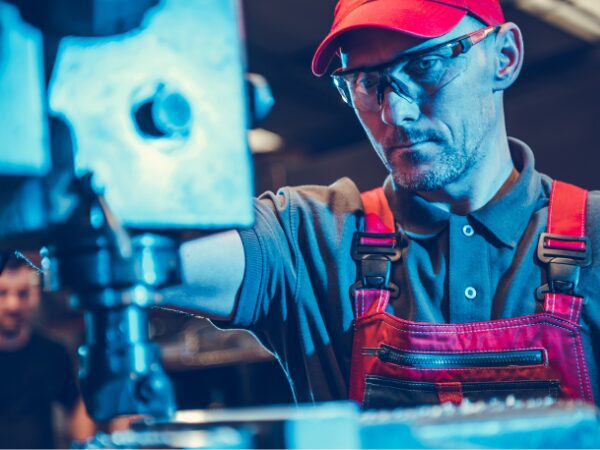Industry 4.0: Digital Transformation in Manufacturing
The Industry 4.0 represents a blend of two industries: information technology and manufacturing. ...

Self-cleaning surfaces have become a necessity. Cleaning public facilities such as public transit systems takes several hours, if not days, for the entire process; That is why many public areas are not cleaned regularly. It is known that efforts were made in order to help people return to their workplaces and other crowded areas without the risk of being infected. This is a major obstacle because, today, most cleaning is carried out by various crews of individuals periodically revisiting high-touch surfaces with sanitizers. Materials like fabric are still utilized on some public transportation seats, despite the fact that they are resistant to light cleaning. In this article, we dive into the types of self-cleaning surfaces, their applications, and the funding eligible for innovators in this space.
Superhydrophobic surfaces are capable of cleaning themselves by rejecting water so thoroughly that water-borne pollutants cannot adhere to them. This is exemplified effectively by the Lotus leaf, whose leaves remain spotless in murky water. Water droplets can disinfect the leaves of most contaminants, a phenomenon that has been trademarked and used in technological systems.
One of the methods for self-cleaning first proposed for the lotus leaf, is dependent on the movement of water drops. A droplet on a surface with high and low contact degrees is often a superhydrophobic surface on which drops of water roll rather than slide. When the droplet moves in this way, it can pick up more particles from the surface of the solid than when it slides.
The ability to repel water, known as hydrophobicity, and attract water, known as hydrophilicity, are the two primary methods that materials can experience to become self-cleaning. When these two types of coatings are exposed to the motion of water, hydrophobic coatings produce rolling drops of water, and hydrophilic coatings produce sheets of water that carry dirt away.
However, hydrophilic poses another feature that can chemically decompose the adsorbed dirt under sunrays with the assistance of a photocatalyst, also referred to as a hydrophilic photocatalytic coating. This characteristic can be found in the hydrophilic layer.
Hydrophobic surfaces are characterized by their poor wettability and contact angles greater than 90 degrees, making them resistant to water. If the contact angle is increased, the surface becomes more hydrophobic, and the adhesion value decreases. Specifically, superhydrophobic surfaces are those having contact angles greater than 150 degrees. The roughness ratio also influences hydrophobicity.
Water’s contact angle increases on rough surfaces, allowing it to form bumps that confine air between the surface and the water. Lotus plants are able to clean themselves because of their naturally superhydrophobic leaves, which are covered with bumps that prevent water from adhering to their surfaces. The impact of these bumps is supplementally increased by a rough layer of nanoscopic wax crystals on top of them. It lets water roll over and wash away contaminants. The attraction between the water and the dirt is greater than that between the water and the surface.

A photocatalytic reaction was the foundation for the first commercially available self-cleaning windows. By introducing molecules (catalysts) that take part in a chemical process without being consumed, the pace of a photoreaction in which one or more reacting components absorb light may be changed. There is a very thin coating of titanium dioxide on these windows. Coatings made with TiO2 seem to be self-cleaning. TiO2 interacts with water under sunlight to produce hydroxyl radicals, which decompose biological compounds and microorganisms adhered to the surface. The hydrophilic TiO2 layer allows rainwater to easily flow over its surface, washing away contaminants. A TiO2 coating is a great way to keep surfaces like doorknobs clean during a pandemic, when cleanliness is of the utmost importance.
The idea of self-cleaning has a wide range of applications and benefits across many different domains. Specifically, self-cleaning materials provide a significant potential for improvement across all industries and sectors as a result of the time, material, energy, and cost savings that may be realized throughout the production process. This technology not only reduces the amount of time and money spent on cleaning, but it also helps to preserve water and energy, which is beneficial to the environment. Experimental development is carried out continuously to discover new smart materials and the way they contribute to the concept of self-cleaning.
Companies of all sizes in Canada will be eligible for SR&ED credits or other incentives if they conduct research and development in this field. Schedule a free consultation with one of our experts for details.
Sources:
https://www.azonano.com/article.aspx?ArticleID=5510
https://www.biolinscientific.com/blog/what-does-self-cleaning-mean
file:///C:/Users/kdian/Downloads/coatings-12-00587.pdf
https://iopscience.iop.org/article/10.1088/1757-899X/133/1/012028/pdf
Explore our latest insights
More arrow_forward
The Industry 4.0 represents a blend of two industries: information technology and manufacturing. ...

Provincial governments are slowly unveiling their provincial budgets outlining fiscal strategies ...

Recently, Canadian representatives attended COP27 to discuss the actionable steps to implement to...

Human-Machine Collaboration has become an essential part of the manufacturing industry. This coll...